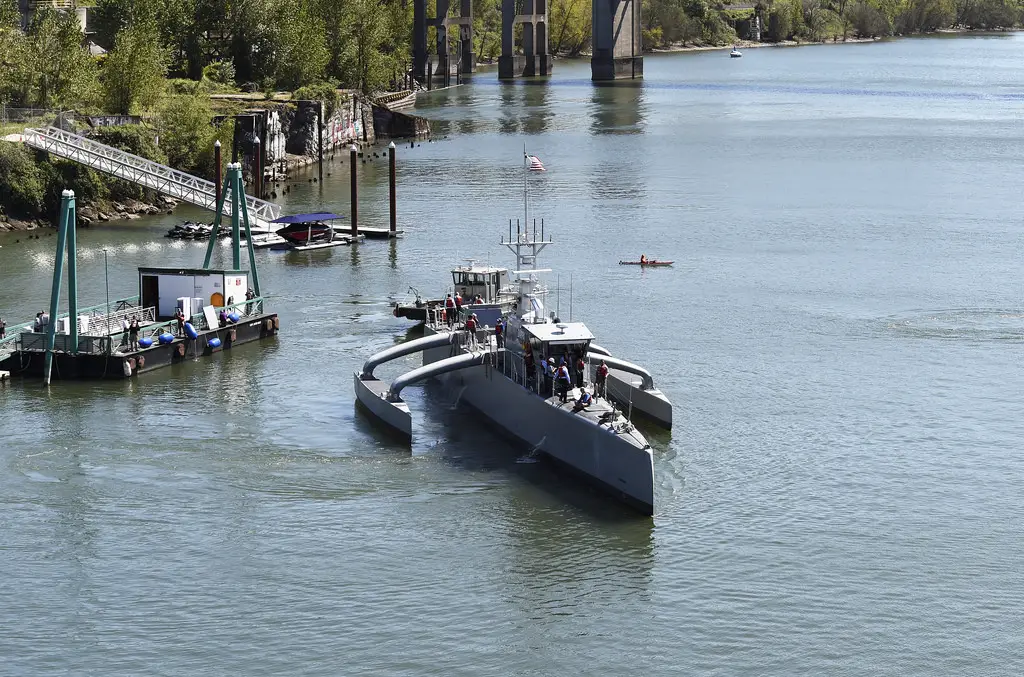Breaking news
US Navy to develop a smaller and unmanned fleet.
| 2019
The US Navy plans to change the way their fleet have been developing since the Cold War. Their actual objective is to construct smaller ships that are cheaper to maintain and to upgrade, and unmanned ships could be the key. An other option could be the conversion of civil ships into missile ships.
 US Navy Sea Hunter (Picture : Office of Naval Research )
US Navy Sea Hunter (Picture : Office of Naval Research )
The US navy has spent the last few years feeling like it was being put in check. China and Russia have heavily invested in anti-access technologies aimed at holding its main force-projection assets (aircraft carriers) at risk. Until now, their fleet aimed to move from a role of simply defending the carrier to going on the offensive. The goal was to spread out over a wide area to strain Chinese intelligence and reconnaissance assets and thereby exercise a degree of sea control in places such as the South and East China seas that China seeks to deny with long-range, anti-ship missiles and an ever-growing fleet.
The Navy plans to spend this year taking the first steps into a different future : looking to get smaller. The idea is to move the fleet away from platforms like the Arleigh Burke-class destroyers (enormous ships heavily weaponised and equiped, but enormously expensive to build, maintain and upgrade), in order to put the Navy’s surface combatants back on the offensive, spreading out to stretch Chinese intelligence and surveillance assets and leave openings for offensive strikes.
Two new classes of manned or optionally manned warships are considered : a medium sensor platform along the lines of the Defense Advanced Research Projects Agency’s Sea Hunter, and a large unmanned surface combatant able to carry sensors and weapons. Alongside these unmanned vessels will we find the next-generation frigate and the large surface combatant (that will ultimately replace both the cruisers and the destroyers).
In this construct, the manned combatants will act as command and control for the unmanned sensors and shooters, keeping humans firmly in the loop. While for the medium unmanned surface combatant, the fleet is looking at a forward sensor platform that can connect back to manned surface combatants that can process and act on the data.
All these platforms will need to be part of a common combat system, and have common parts to reduce the amount of specialized training that sailors need to operate them, as well as the costs of parts necessary to fix them. The fleet is developing a combat system that will work much like an iPhone where different senors and systems plug into the main system in the form of applications for easy integration.
Additionally, the plan called for putting missiles on everything the Navy put to sea to force the Chinese to think about every single ship, not just combatants. The Navy further evolved this idea, and in 2017, the service’s top admiral began talking about relying on networks to broaden the reach of any group of ships.


























